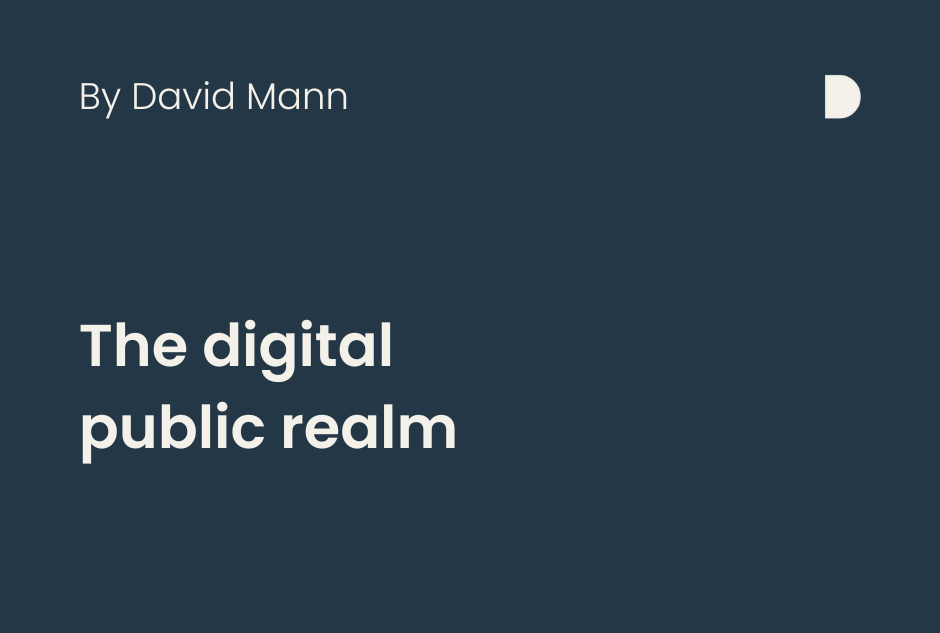The digital public realm and how we’re increasing our impact

The important thing for us is to work on services that improve people’s lives, regardless of who provides them
For over 17 years now, dxw has worked with a broad range of the public and third sectors; central and local government, agencies and arms-length bodies, the NHS, charities and housing associations.
We have developed highly effective ways to deliver modern, user-centred services in organisations large and small. Our teams are adept at navigating complex stakeholder relationships, challenging technical estates, regulatory environments and building capability in client teams.
In the digital world of 2025, the public sector doesn’t hold a monopoly on services we all rely on to live our lives. Public services are increasingly provided by non-profits, charities, community interest companies, social enterprises and the private sector.
For dxw, this means the things we deliver are part of what I’m calling the ‘digital public realm’.
In the built environment, the phrase public realm is well understood, it means places we have access to like streets, parks and public squares. When I talk about the digital public realm, I mean access to the digital public services that we all rely on as citizens.
Some of these services are things that are accessed through GOV.UK. But where it gets less clear are the services we access through our local authorities. Some of these are going to be sitting on local government domains, others via third parties. For example, school admissions are handled by an organisation created by local authorities and are usually found on a local government website.
Over time, the number of public services delivered by different kinds of organisations will only increase.
Another example is GLL, which operates under the Better brand and runs over 240 leisure centres, 120 libraries and 15 children’s centres on behalf of 50 local councils, public agencies and sporting organisations.
There are lots of mutually owned organisations like credit unions. Some of them started life in local authorities and were spun out. Some of them work with NHS Trusts, the Armed Forces, local councils, schools, Parliament, TFL and many others to provide employee benefits and a range of financial services including mortgages.
This is not entirely new for dxw which has already worked with some of these types of organisations. We have done some service design coaching with Leeds Building Society, which is mutually owned. Back in 2016, we did some strategic consulting with the Co-op.
For many years, we worked with Thames Valley Housing (now Metropolitan Thames Valley). Housing associations typically have a range of ownership structures; some are charities or social enterprises, some are privately owned, indeed some combine different models in the same organisation. For example, Thames Valley Housing had an equity-backed rental property subsidiary company.
These types of organisations could be described as public sector adjacent but dxw could work with private sector organisations too. The important thing for us is to work on services that improve people’s lives, regardless of who provides them.
I expect to see dxw working with a much more diverse range of organisations from the digital public realm in the coming years. This will form an important part of how we increase our impact in delivering our mission, our sustainability and growth.
It will also mean lots of exciting opportunities for our teams to work with different sectors in a variety of different ways. At dxw, our mission is not just a set of aspirational words on a website or stencilled on the office walls, it is baked into the legal basis upon which we operate as an employee-owned business.